Principal Investigator
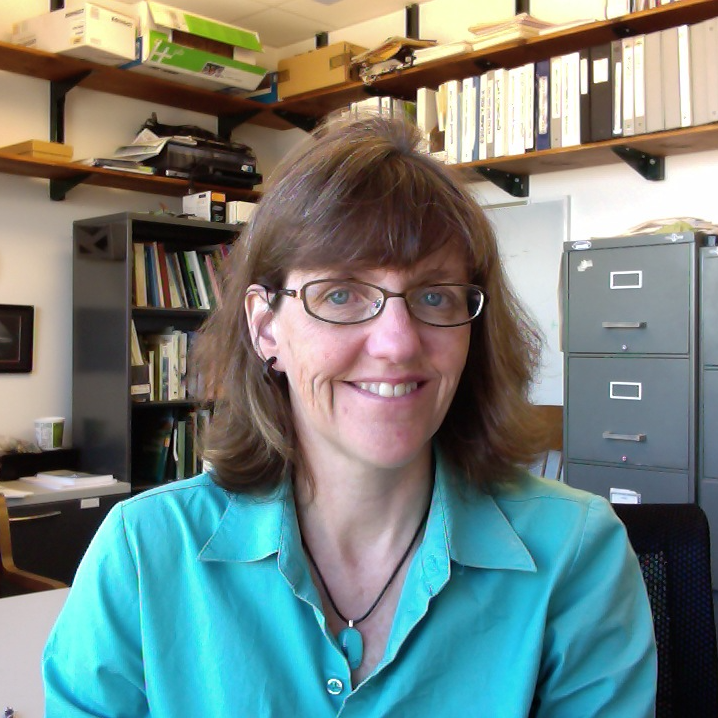
Margaret Rubega
Margaret Rubega leads the lab by keeping the focus on mechanism — a correlation alone is generally not an answer to a question, in her book. She began her career studying terns, as part of the Great Gull Island Project; she has gone on to study an array of avian species in the Bering Sea, the Antarctic Peninsula, and North America. So far, despite staying out of the tropics, she’s had gut parasites 3 times, which might have something to do with her over-riding interest, in both research and life, in feeding. Her CV is here.
Graduate Students
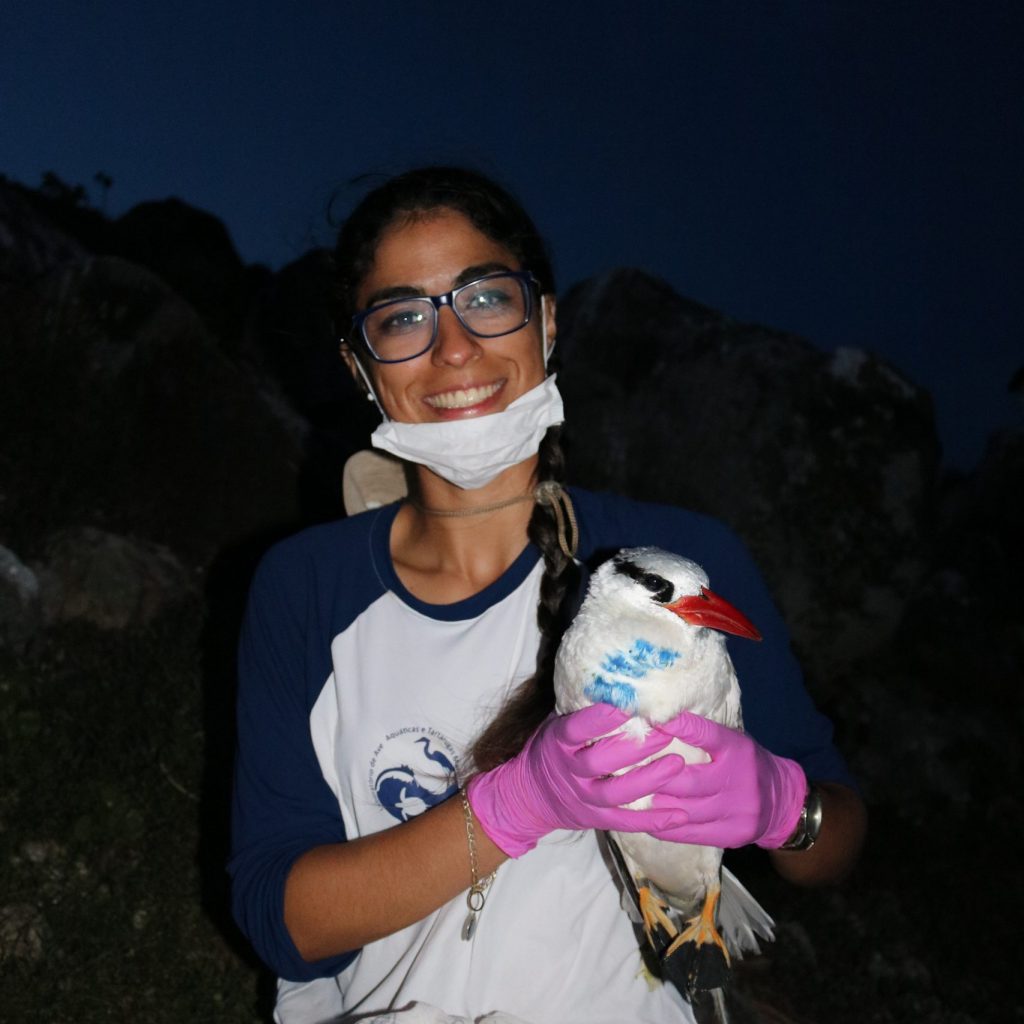
Cindy Barreto
Cindy is a PhD candidate with research focused on conservation genomics of roseate terns (Sterna dougallii). She’s currently assembling and annotating the whole genome of roseate terns, to be used as a reference genome. She’s also investigating hybridization and introgression between roseate and common terns (Sterna hirundo) in Great Gull Island, one of the biggest colonies and a roseate tern’s source population in the Northwest Atlantic. This study involves DNA extraction from eggs, also being analyzed for morphology and patterns. At the breeding site, she’s also studying the roseate and common terns’ diet in different breeding stages (adults during egg incubation chick rearing, and chicks) and at the Brazilian wintering grounds through DNA metabarcoding. She’s also analyzing relationships between the mass of roseate and common terns with temperature throughout the years (~60 years), with a projection on climate change.
Cindy has a master’s degree in Biology of Freshwater Ecosystems from the Universidade Federal do Rio Grande, Brazil, with an exchange period at the University of Saskatchewan, Canada, with a fellowship of the Emerging Leaders in the Americas Program (ELAP). She also holds a degree in Licentiate of Sciences (Biological Sciences) from Universidade Federal de Pelotas and a Bachelor in Technology (Environmental Management) from Instituto Federal Sul-rio-grandense, Brazil.
Her research interests are: Animal behavior; Animal health; Avian ecology; Bird anatomy and physiology; Conservation Biology; Evolution; Ecosystem ecology; Environmental management strategies; Environmental risks for biodiversity richness; Migration and Movement tracking.
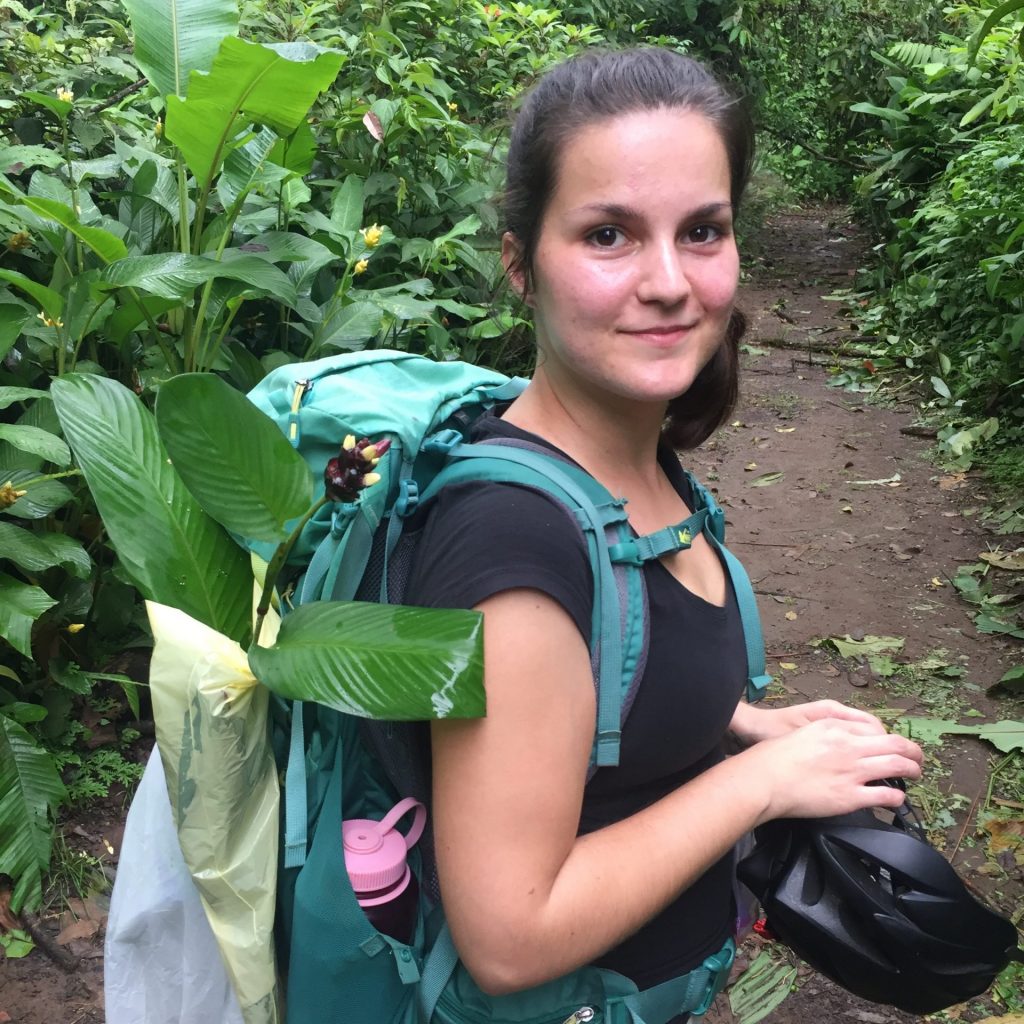
Laura Bizzarri
Laura is a PhD candidate focusing on mechanisms that shape tropical arthropod communities. She investigates these topics using phoretic hummingbird flower mites as a study system. These are small arachnid arthropods that live on plants and use hummingbirds for dispersal among plants. She is also interested in how rising temperatures are going to alter these mite communities by affecting their survival and host plant use. During her masters, which she also completed in UConn’s EEB department, she focused on hummingbird flower mites and their interactions with Neotropical gingers (Zingiberales) and the hummingbirds that pollinate these plants. In her research, she uses various techniques to better understand these arthropod communities, including mist netting of hummingbirds, video recordings, DNA barcoding and taxonomic identification of mite specimens. Laura received her BS in Zoology from Michigan State University, where she focused on the biology and management of berry crop insect pests, such as the spotted wing drosophila (Drosophila suzukii) and grape berry moth (Paralobesia viteana). In her free time she enjoys reading, watching reality tv, listening to music and going on walks.

Jessica Espinosa
Jess is a PhD candidate broadly interested in climate change and conservation. Currently she uses a combination of techniques, including behavioral studies, camera monitoring, and sea level and demographic modeling, to study how sea level rise affects roseate tern nesting habitat and resulting population demographics. Roseate terns (Sterna dougallii) are federally endangered seabirds, and the US/Canada population breeds on offshore islands in the Northern Atlantic and overwinters in South America. Jess conducts fieldwork on Great Gull Island, which is one of the largest roseate and common tern colonies in the Western hemisphere, with over 30,000 birds breeding there every summer. While there, she wears funny hats and gets covered in bird poop, though she manages to get some work done in her spare time. She is also a Pathways Intern with the US Fish and Wildlife Service working on creating a Species Status Assessment for the roseate tern. Jess received her MA (Ecology, Evolution, and Conservation Biology) from Columbia University, where she studied how urbanization affects hermit crab shell selection and preference in Fiji. She also received her BA (Biology and Music) from Mount Holyoke College, where she examined how climate change affects fiddler crab morphology and range shifts. Some of her indoor hobbies include martial arts (naginata), playing string instruments, and catching up on the latest and greatest TV shows.
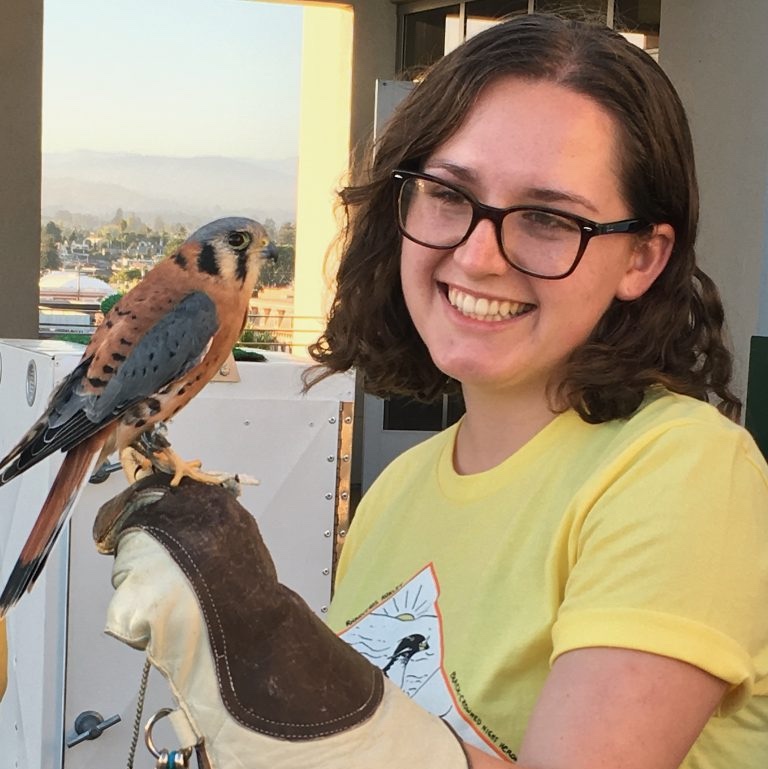
Chelsea Kintz
Chelsea is a PhD student interested in the intersection of functional morphology with ecology and evolution. Their current project is examining bird tongues to understand the diversity in structure and function across the avian phylogenetic tree. They are especially interested in the role the tongue plays during prey capture and how that varies across related species and prey type. Chelsea received their Bachelor of Science in Ecology and Evolutionary Biology from the University of California, Santa Cruz, where they worked on several research projects ranging from moray eels to great blue herons in the Mehta Lab. Chelsea also loves scientific illustration and enjoys getting to use that skill to help communicate science visually. Outside of science and art, Chelsea enjoys reading, being out in nature, and playing with their dog.

Frank Muzio
Frank is a PhD Candidate interested in the evolution, functional morphology, and biomechanics in vertebrates. In the Rubega Lab, Frank is studying feather structure and how it relates to function. This includes trying to make sense of how exactly feathers repel water and keep birds dry. Frank completed his undergraduate degree at Cal Poly Humboldt State majoring in Zoology. Before grad school, Frank worked as a wildlife biologist in the San Francisco Bay Area.
Undergraduate Students

Eli Harris
Eli Harris is an incoming senior undergrad student interested in behavior, ethics/accountability in ecology, and conservation. Eli is currently studying intraspecific aggressive behavior between turkey vultures while foraging. They’re a dual degree student in EEB and Natural Resources with a concentration in fisheries and wildlife conservation. Eli also likes plants, spending time with their cat, and writing/reading poetry.
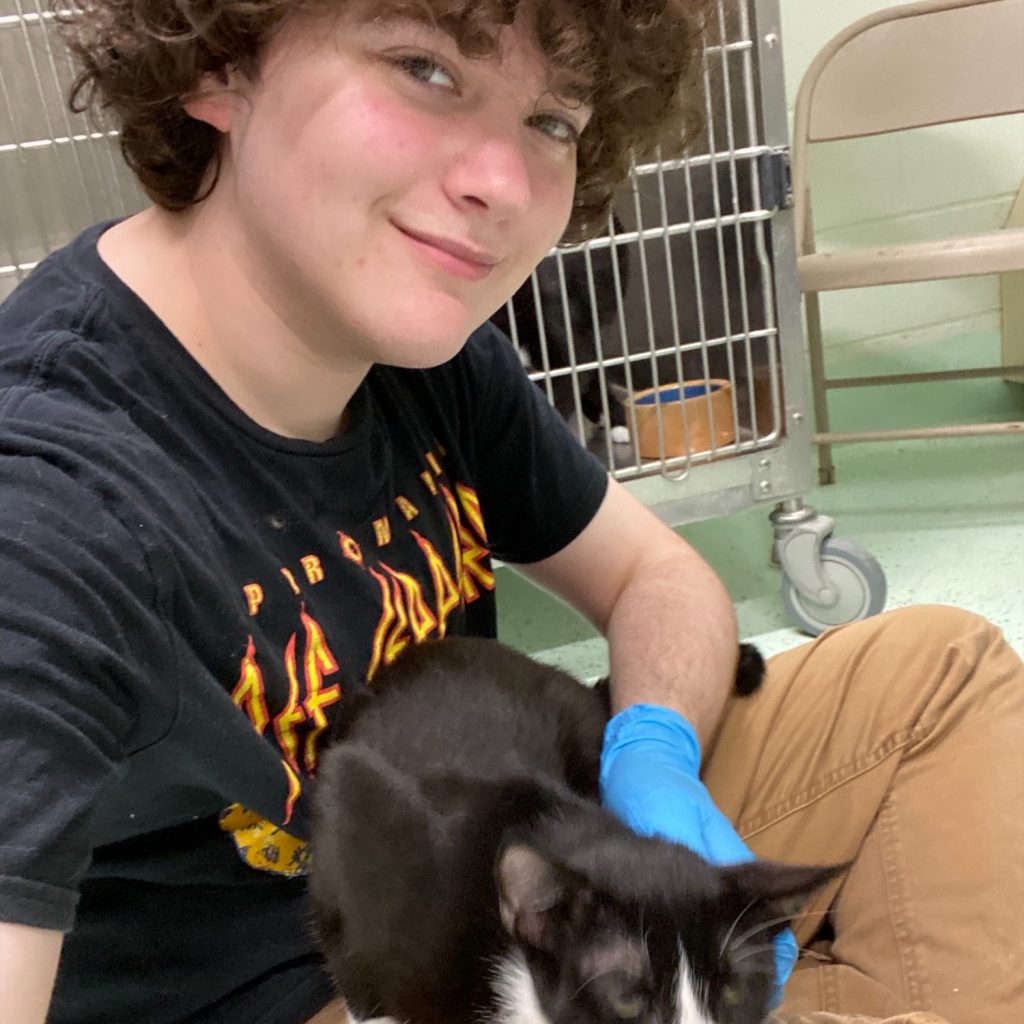
Milo Terifay
Milo is a junior undergrad majoring in EEB. He is interested in analyzing and cataloging variation among and within species, sex differences in birds and how it is studied, wildlife conservation, and inclusivity for all in STEM fields. He is currently studying tern eggshells and is learning about ornithological laboratory processes and how they are used. He hopes to enter a career helping animals. Milo also works as a kennel keeper outside of the school year and enjoys spending time with animals.

Gabby Wincherhern
Gabby Wincherhern is a junior interested in conservation, behavior, and science communication. They spent the summer at Shoals Marine Laboratory in the Gulf of Maine learning about marine mammals and terns, and seeing many glorious birds. In her free time, she enjoys writing, drawing, and playing piano.
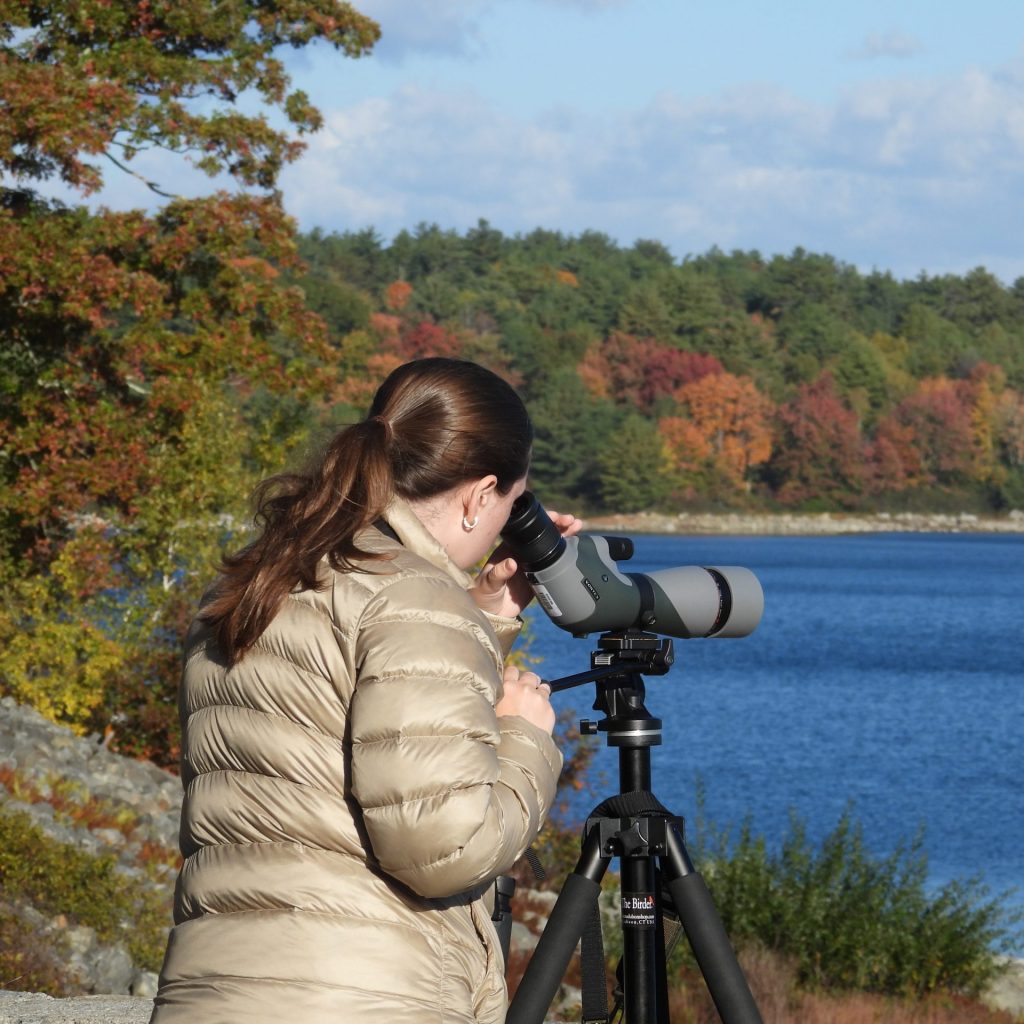
Emily Winslow
Emily Winslow is a junior undergrad EEB major who is interested in conservation, behavior, bioacoustics, and predator-prey interactions. She is currently developing an honors thesis project investigating patterns of predation on common and roseate terns on Great Gull Island using audio and/or video detection. Emily spends most of her free time birding, drawing, reading, and writing.
Recent Lab Alumni
Martin Kang
Martin Kang is a Master’s student in the Rubega lab working on projects related to both the conservation of terns and their feather microstructure. During their summer fieldwork on Great Gull Island, Martin tracked the thermal differences between historic and artificial nest sites of an endangered population of northwestern atlantic roseate terns (Sterna dougallii).
While at UConn they discovered undescribed ciliation on the body feathers of common terns (Sterna hirundo) using scanning electron microscopy.
Martin received their Bachelor of Science in Ecology, Behavior, and Evolution with a Minor in English from UCLA, where they completed a senior thesis on the evolution of a social signaling trait in urban populations of dark-eyed juncos in the Yeh Lab. They are a long-time birder and began banding birds at the age of 17. Martin enjoys film, road trips, and taking their two cats on on-leash hikes.